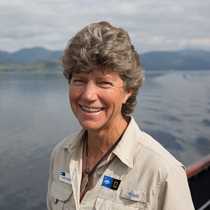Our first full day on Lord of the Glens started off with an outing to the Culloden Battlefield, the site of Prince Charles’ final battle in his campaign to restore the Stuart dynasty. Here in 1746, government forces defeated the Jacobite rebels. Years of repression of the Highland culture followed, with bagpipes and kilts banned and the Gaelic language proscribed. We had the opportunity to visit the award winning Culloden Museum, watch a period actor dressed as a Jacobite gentleman describing the weaponry used during the battle, and explore the battlefield itself, where headstones mark the graves of the Highland clansmen buried on the field. From Culloden we ventured back in time to visit Clava Cairns with its Bronze Age burial cairns and standing stones, constructed around 2000 to 1500 BC. Three massive cairns dominate the site, two of them with passages aligned to catch the sun’s rays on the winter solstice.
Lunchtime found us back on board Lord of the Glens, venturing down the Great Glen and into Loch Ness. The Great Glen was created by a strike-slip geologic fault around 400 million years ago, and was subsequently scoured by glaciers. Loch Ness is consequently so deep (over 1000 ft) that it holds as much freshwater as the rivers and lakes of England and Wales combined–creating many places for the Loch Ness monster to hide. We passed by Urquhart Castle, the prime Nessie-spotting place, but no sign of the great monster. Yet Urquhart provided us with excellent photo opportunities. The Castle was blown up in 1692 so that Jacobite rebels couldn’t make use of it, and is now a picturesque ruin of towers and crumbled walls on the shore of Loch Ness.
As we sailed through Loch Ness, Robin gave a presentation on the natural environment of Scotland, providing an overview of Highland geology, flora, and fauna. Then we arrived at Fort Augustus, a pleasant town with a diversity of shops, pubs, and a small museum. In an afternoon of sunshine, we enjoyed a variety of activities. Some set off with David and Robin to explore the surrounds, walking through pastures and forests, and a historic cemetery where one of Robert Burns’ friends was buried. Standing by the headstone, David gave a reading of Burns’ poem: “John Anderson, My Jo.” Another group joined Eric for a kayak adventure on the canal, while others took the afternoon to explore the town itself. A local Ceilidh band provided after-dinner entertainment, and we ended the day with the music of accordion, drums, and fiddle.







